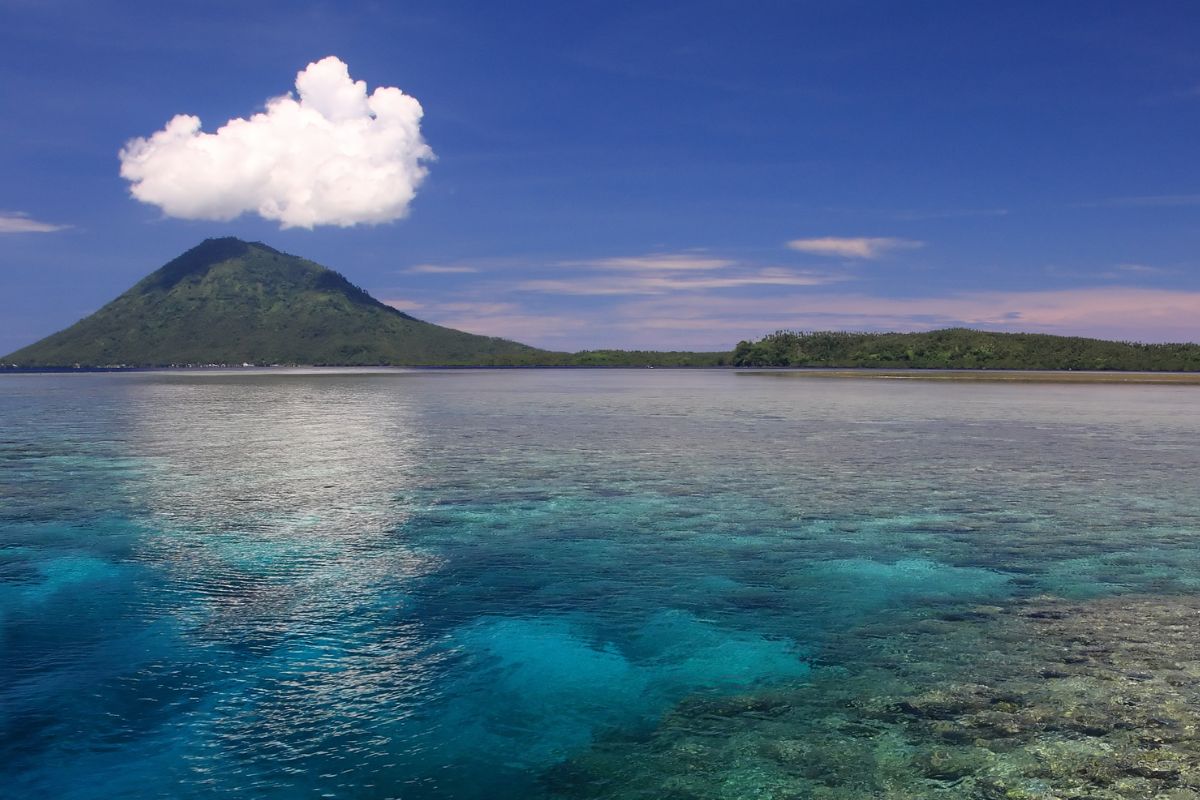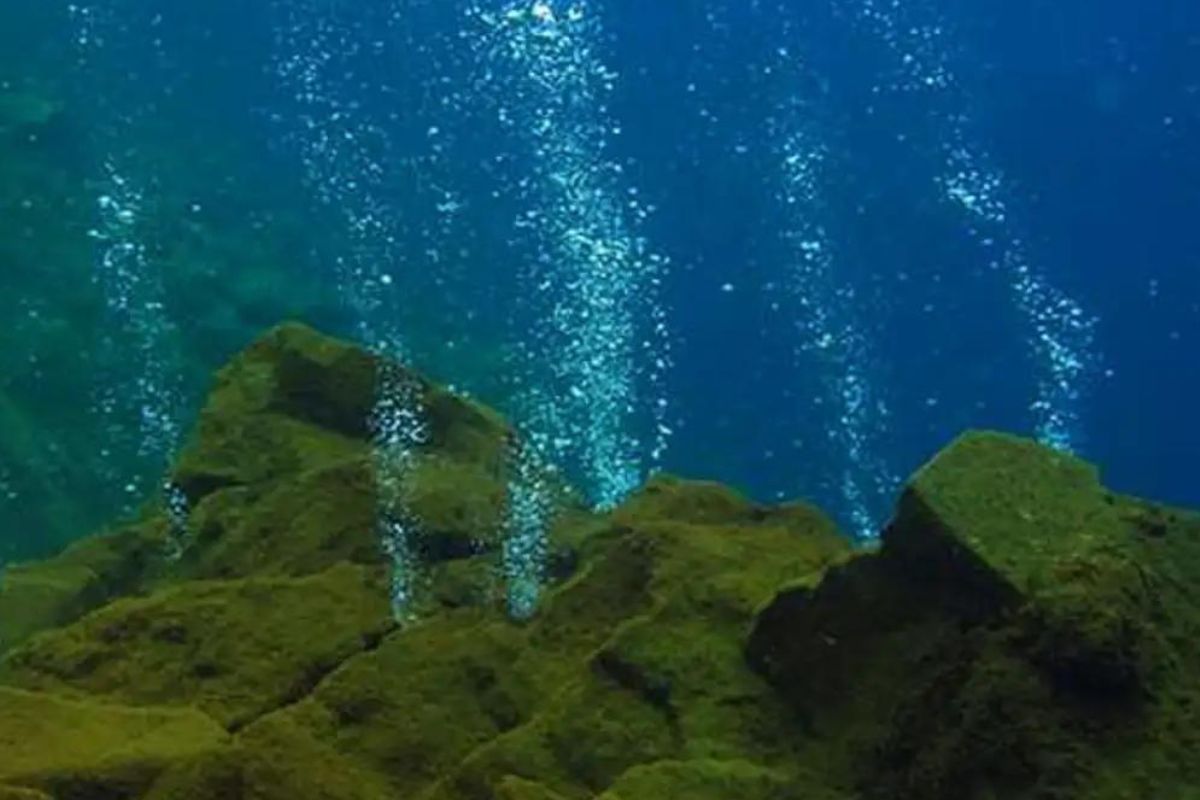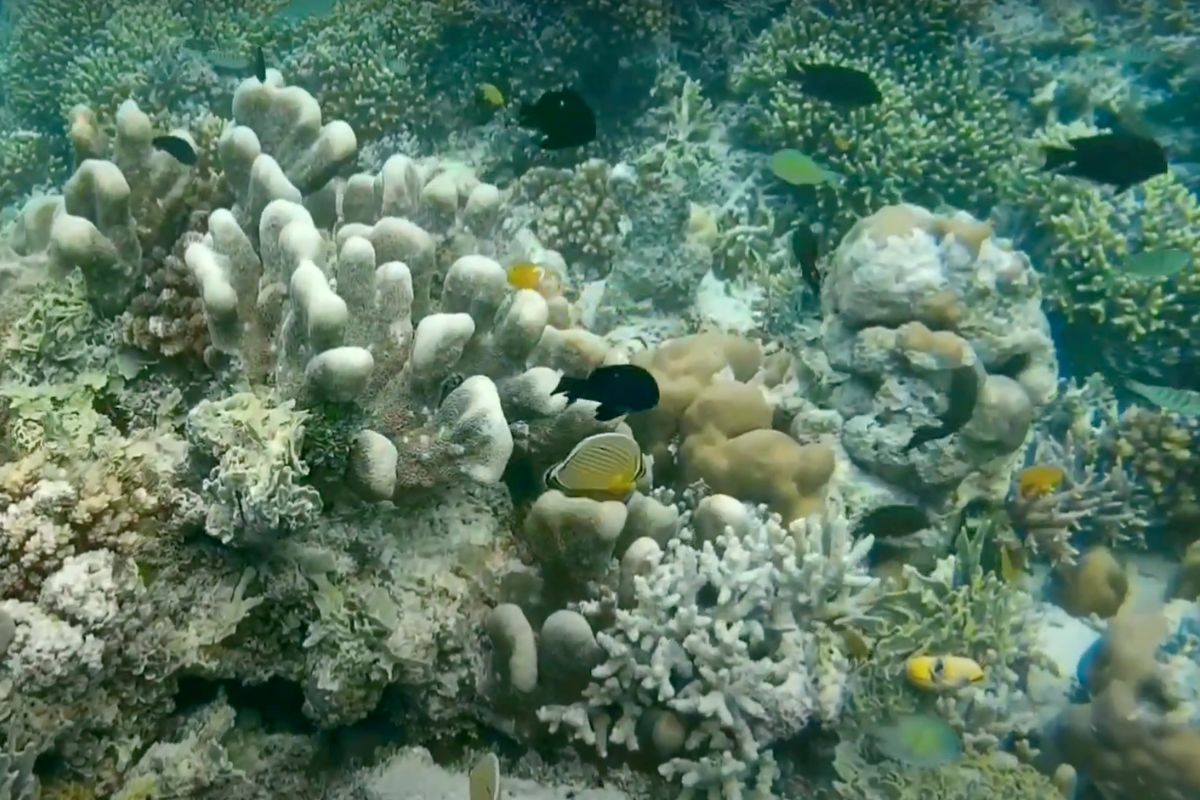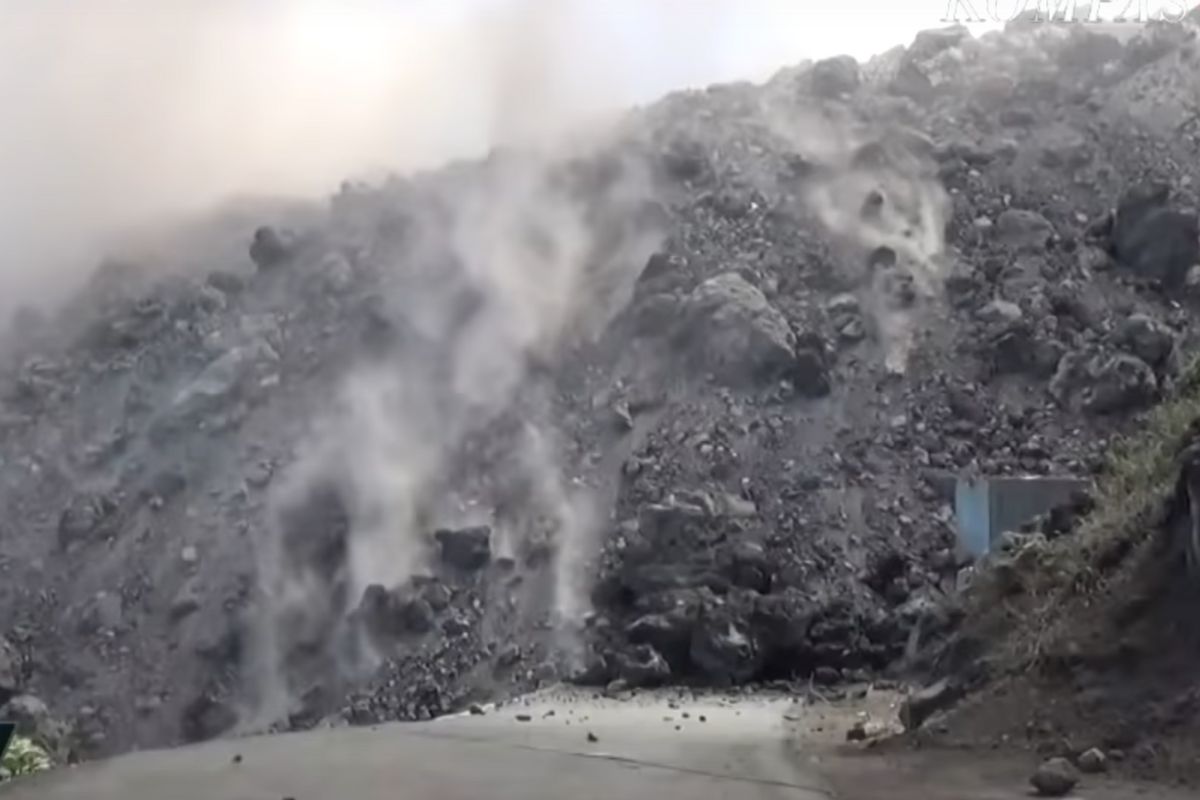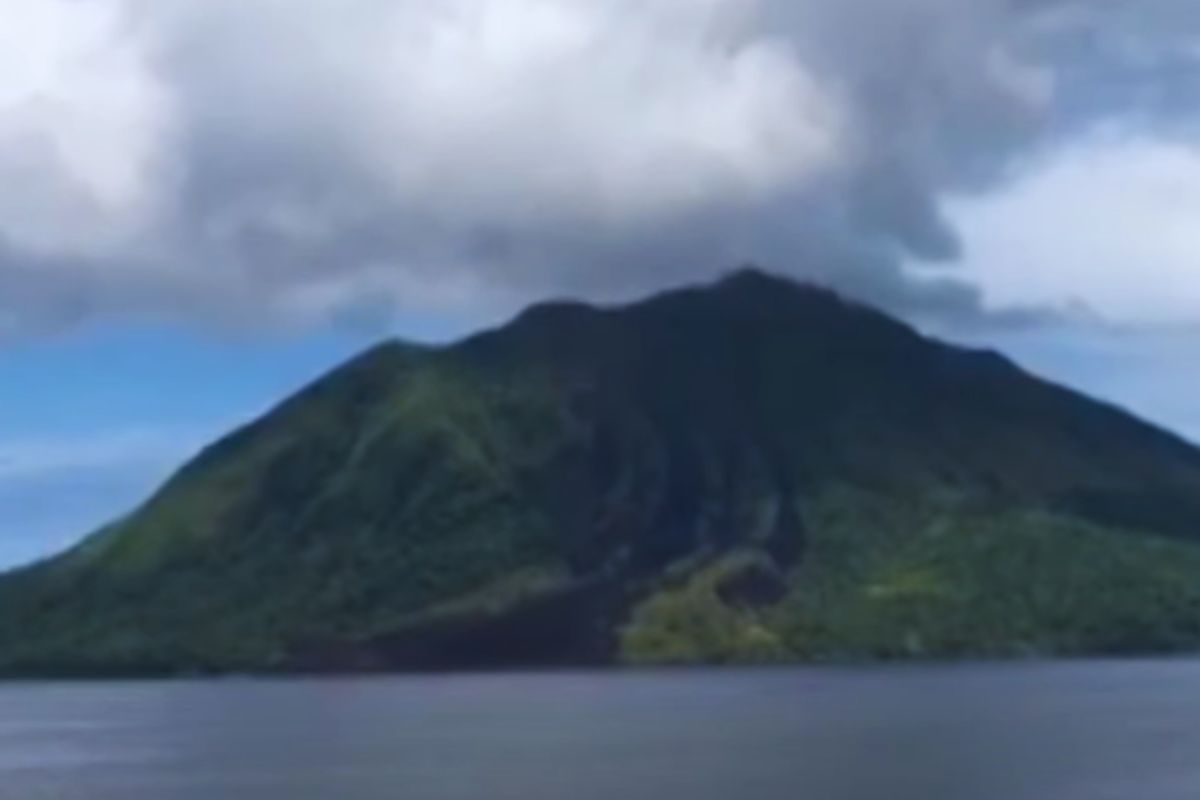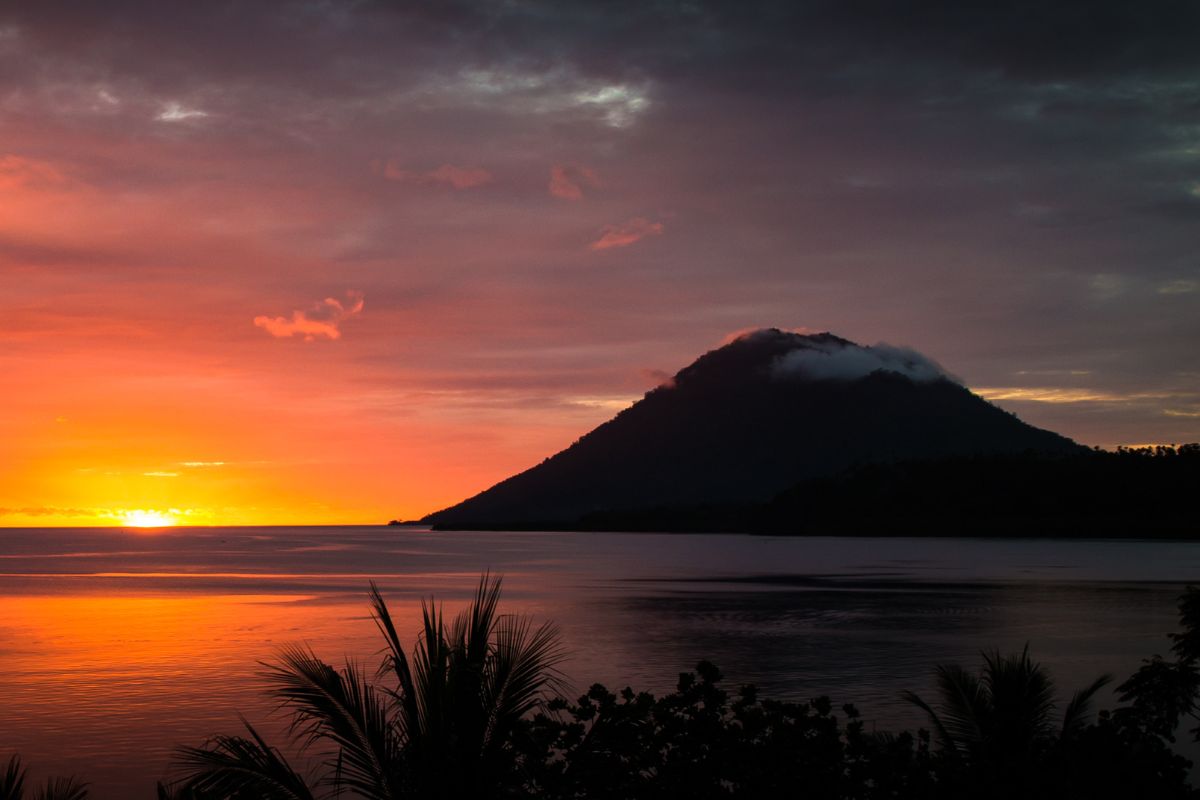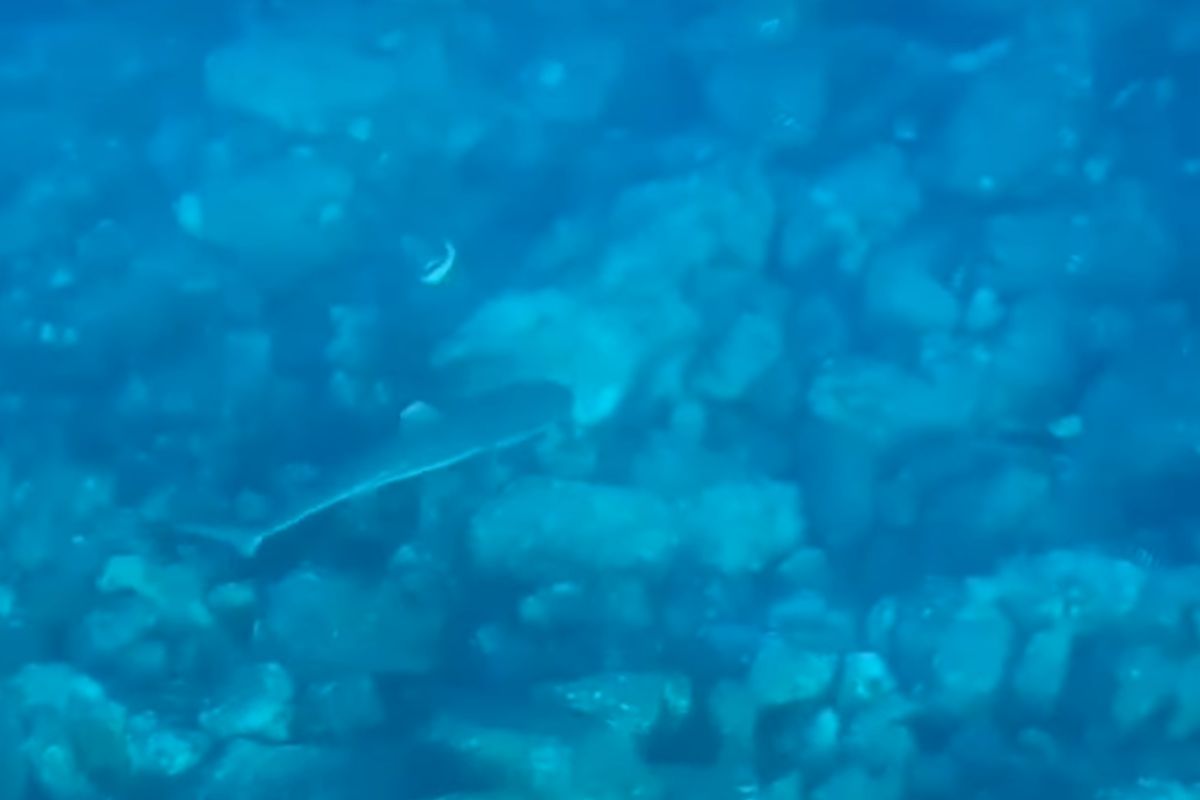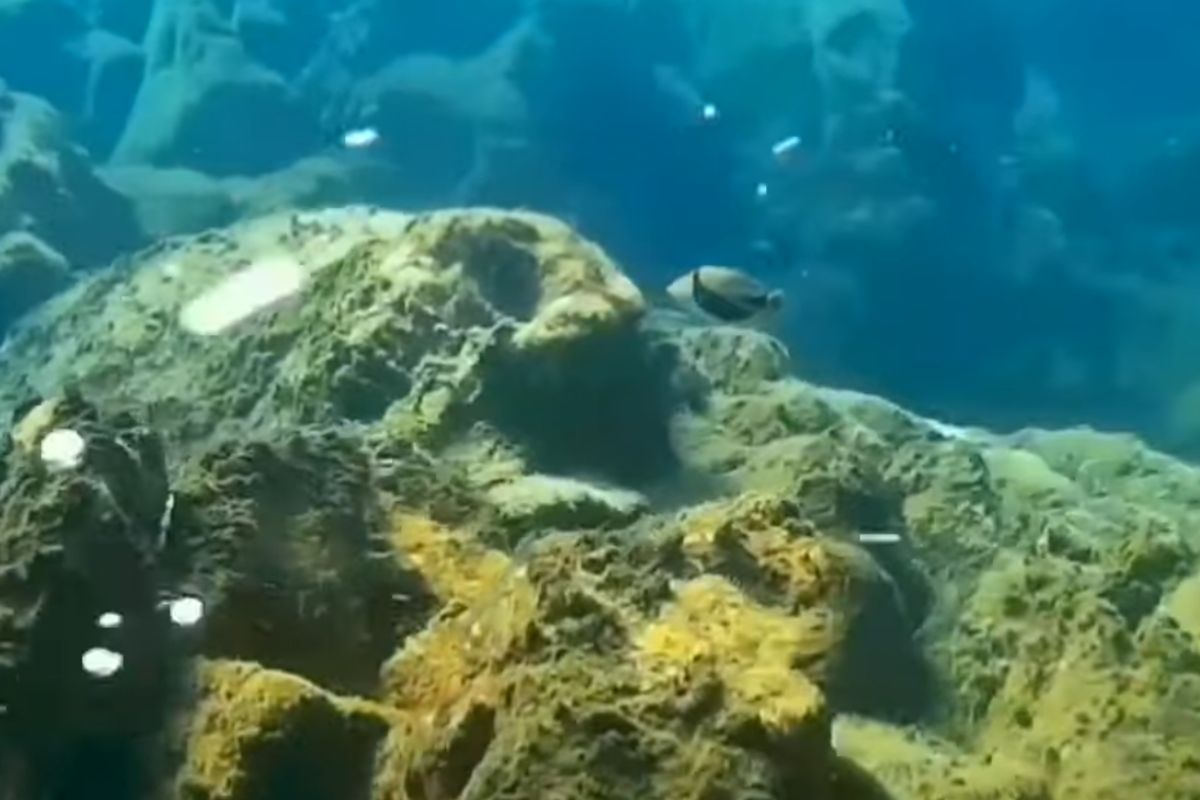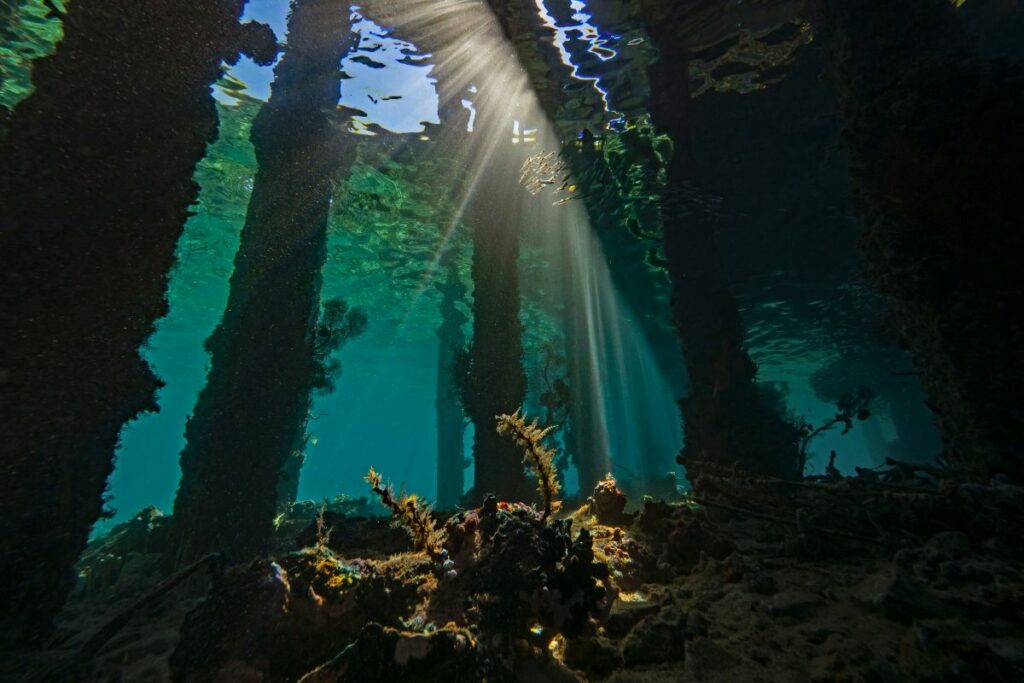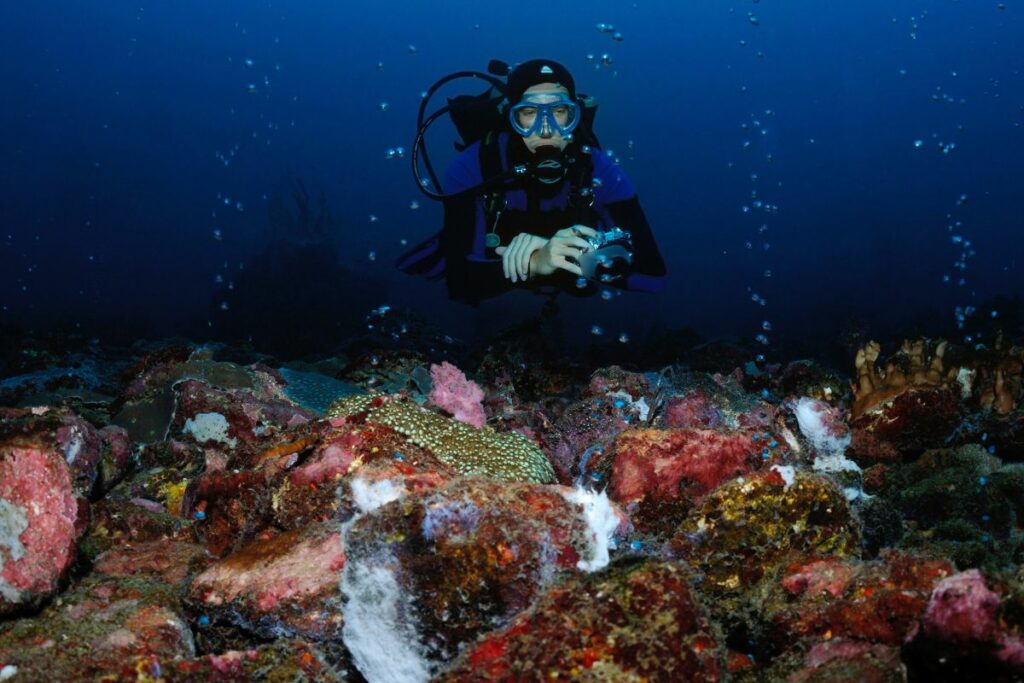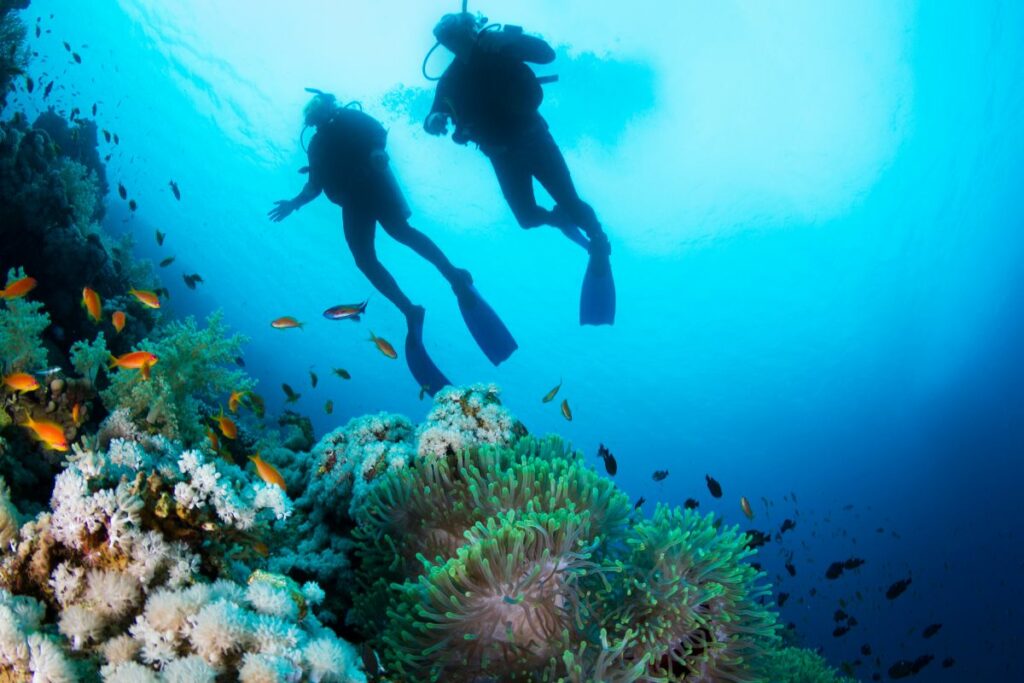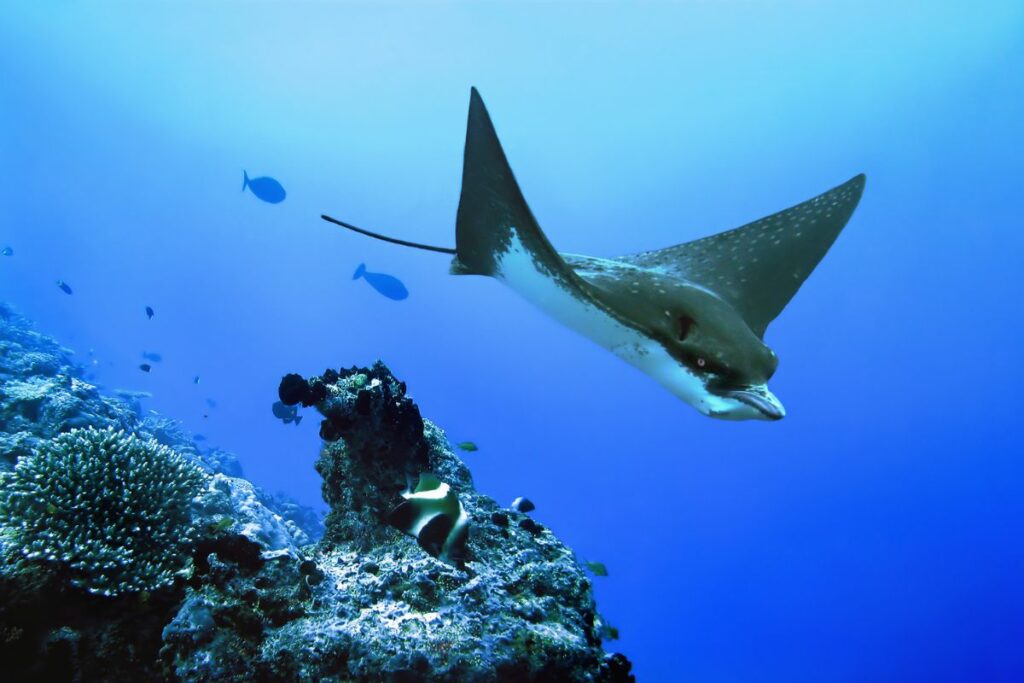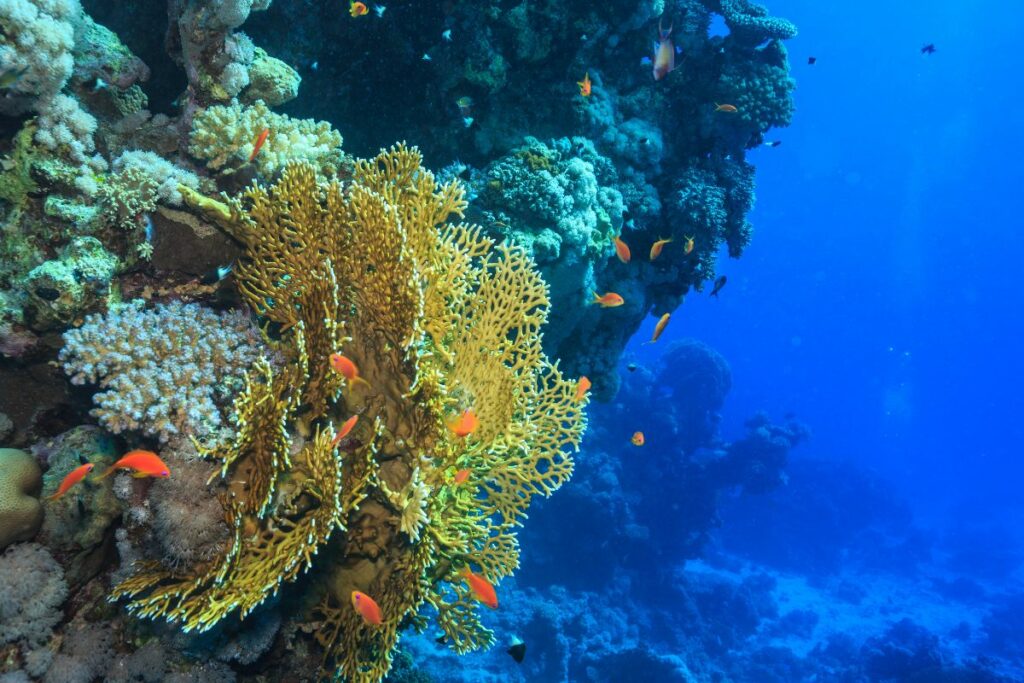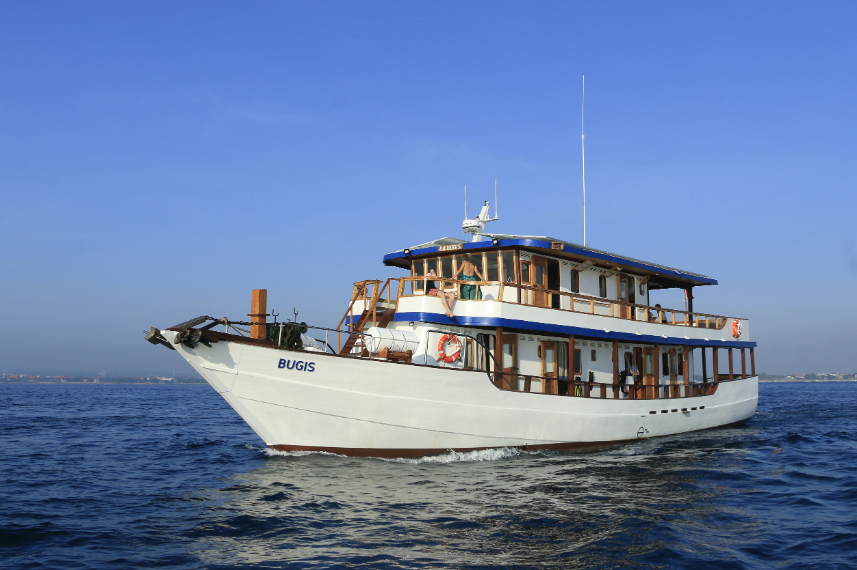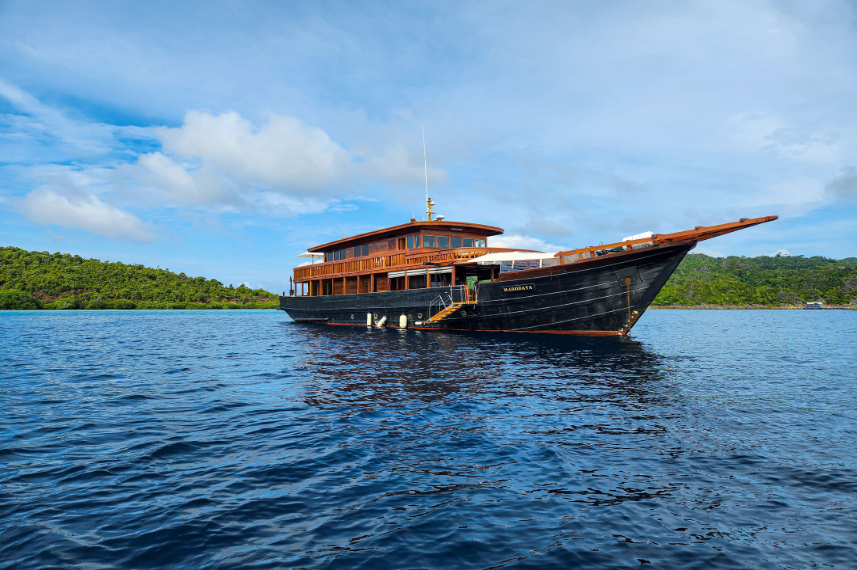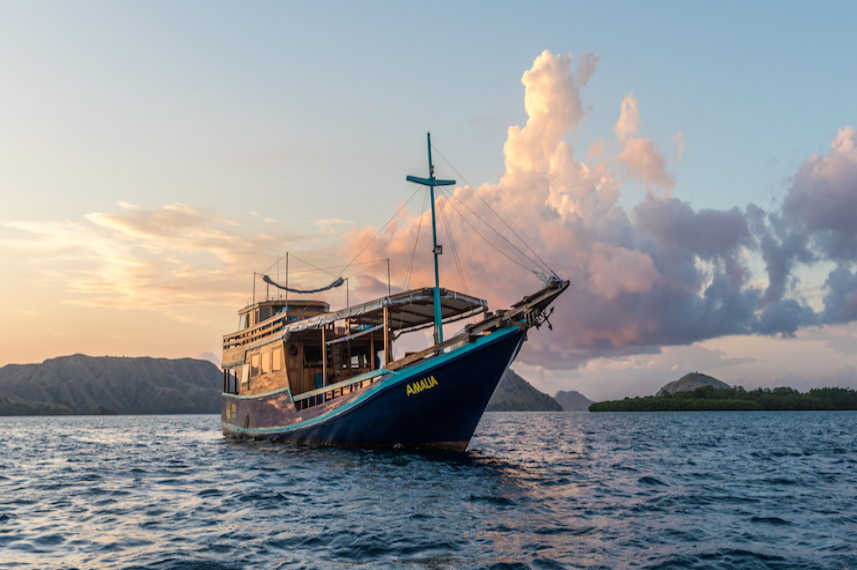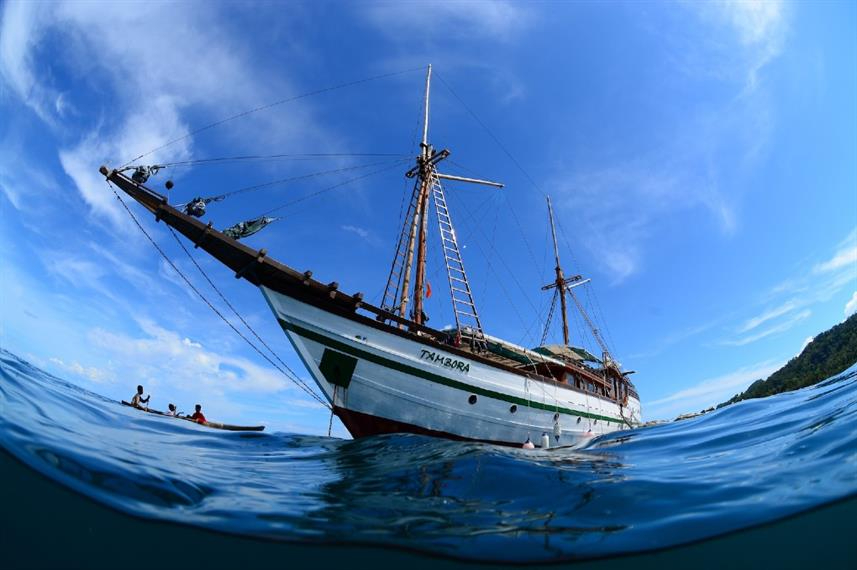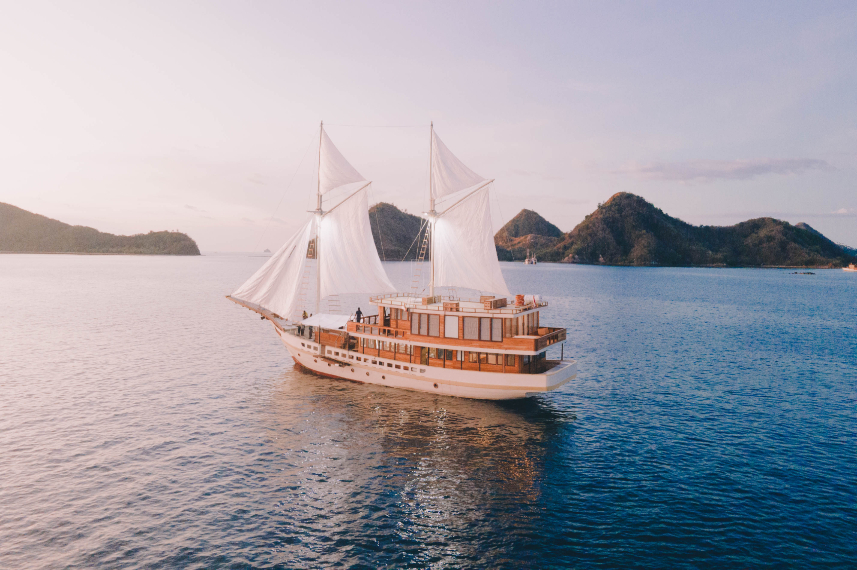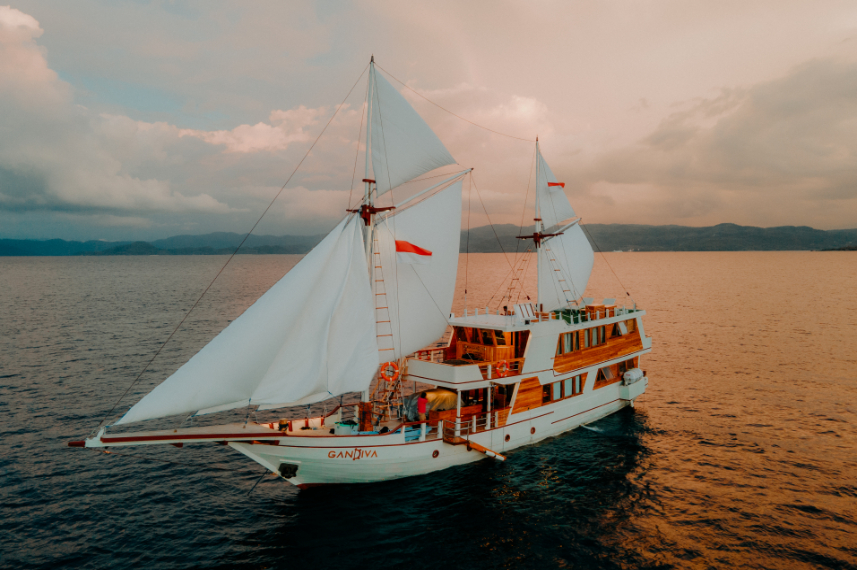Sangihe
Bunaken and Lembeh might be on every diver’s mind when the word Sulawesi comes into a conversation. But on the northeast coast of Sulawesi lies a group of volcanic islands called Sangihe, which consists of more than 50 islands sandwiched between Sulawesi and Mindanao, Philippines. This is one of those regions that many people don’t talk about enough but offers the same spectacular experience.
The area’s remoteness, strategic location in the heart of The Coral Triangle, and surrounded by the Celebes Sea of the western Pacific Ocean with strong currents ensure remarkable marine life and underwater scenery. Combined with active volcanic islands, seamounts, and trenches, Sangihe is one of Indonesia’s rarely visited diving destinations, but it certainly should be on every diver’s list.
Top highlights of Sangihe
- Explore the submerged volcano of Banua Wuhu on Mahengetang Island, complete with the bubbling boulders
- Head to Ruang Island for two black lava flows spectacle that runs from the crater into the sea
- Dive into Siau Island once the sun is sinking and hear the rumbling sound of the Karangetang volcano
- The Drowned Village is the perfect site to see the remnants of the village before it got drowned by a volcanic eruption in 1963
About Sangihe
As one of the regions in the North Sulawesi province, Sangihe is a mini-Indonesian with more than 40 volcanic islands scattered on the off-coast north of Manado. Mindanao is only less than 300 kilometers away.
As one of the outer areas in Indonesia, Sangihe covers an area of 44,000 square kilometers of sea and only 2,263 square meters of land. Mount Awu (1,320 meters) on Sangihe Island and Mount Karangetang (1,827 meters) on Siau Island are among the most active volcanoes in Sangihe Regency. Also, the seabed topography around Sangihe is surrounded by seamounts, which have risen from a depth of 450 meters to more than 2000 meters below sea level.
Diving in Sangihe
Sangihe is unlike many diving destinations in Indonesia because this mini archipelago mainly consists of volcanic islands. Not only above sea level but also seamounts as tall as 500 meters below the sea surface are scattered around the islands.
Different species of marine life, from soft and hard corals in various colors, which include table corals, cabbage corals, black corals, sponges, gorgonians, and sea sponges, covered many of the steep walls in Sangihe. Meanwhile, barracudas, jacks, Napoleon wrasses, fusiliers, tunas, and groupers often come in large groups, blocking the sun from penetrating deeper and creating a cloud of movements for a moment.
Macros like pygmy seahorses, cuttlefish, anemonefish, and different species of crabs, shrimps, and nudibranchs are often found hiding among the coral reef. The geographic location of Sangihe ensures that big fish, like eagle rays, sharks, different species of whales, and even pods of dolphins, can sometimes be found in the waters around the islands scattered from north of the main island of Sulawesi into the border with the Philippines.
Discover your next adventure in
The Submarine Volcano of Banua Wuhu
Sangihe archipelago consists of more than 50 volcanic islands, so it is no surprise there are also many underwater volcanoes around the island. Among those seamounts, nothing comes close to the incredible Banua Wuhu.
Part of Mahengetang Island, this volcano has erupted several times throughout the decades. From these eruptions, ephemeral islands were formed and disappeared. According to the records, there have been four occurrences, in 1835, 1889, 1909, and 1919, where the islands appeared but disappeared only a few years later.
Banua Wuhu rises more than 400 meters from the sea floor, with the peak only 5 meters from the sea surface. The bubbles from the active volcano can be seen emanating from the boulders, with the water temperature around it ranging from 37- 38 degrees Celsius. Due to this reason, divers are advised to wear appropriate dive suits as the sulfur content can cause skin irritations.
Marine life around the volcano consists of different species of corals and sponges in various shades and sizes. At the same time, fusiliers, mackerels, jacks, parrotfish, and even reef sharks are often found swimming swiftly among the rising bubbles.
Out of all the submarine volcanoes in the world, Banua Wuhu is considered the only one safe for divers. The reason is there are no lava flows or toxic fumes, which usually attach to submerged volcanos. In 2012, Banua Wuhu was voted one of the 50 best dive sites in the world, alongside Raja Ampat.
Diving Environments in Sangihe
The topography of the dive sites in Sangihe is mostly seamount and reef, and its stunning landscape is owed to the volcanic chain of islands and its remote location. The depth in this region ranges from 15 to approximately 60 meters.
The crystal-clear waters guarantee terrific visibility. It falls within 10 to 30 meters, depending on the season. The dry season offers the best visibility, while it can be less spectacular during the rainy season.
Many of the spots in Sangihe are aimed at intermediate and experienced divers due to the strong currents, and it is advisable to wear 3 mm or 5 mm full-body wetsuits even though the water temperature is always within the range of 26 to 30 degrees Celsius, even during the coldest months.
Discover your next adventure in
How to get to Sangihe
By plane
The entry point to explore the Sangihe islands is Manado, the capital of North Sulawesi province. Direct flights to Sam Ratulangi International Airport are available from Jakarta (Garuda, Batik Air, Citilink), Singapore (Scoot), or Surabaya (Lion Air).
There are no direct flights from Bali to Manado, as most services have layovers in Surabaya, Makassar, or Jakarta.
There is an airport in Tahuna, the capital of Sangihe, called Naha, but the flight to and from Manado only occurs twice a week when this article was written (every Monday and Friday with Wings Air).
By Liveaboard
Due to the remoteness of the Sangihe Islands, exploring this mini archipelago can only be accessed by Liveaboard. It is also the most convenient way as everything has been arranged beforehand.
Liveaboard service usually departs from Manado or Bangka. The trip to Sangihe is often combined with the trip to Lembeh and Bunaken. Liveaboard is the sensible choice as combining all these beautiful destinations in one trip is possible.
Diving Seasons & Weather in Sangihe
Diving in Sangihe can be done throughout the year, with the best time to dive occurring from March to October when the islands experience dry season. The visibility is the most excellent during this period.
The location of the Sangihe Islands, which is in the open sea, means the strong winds pass the region from July to October, and during the rainy season, which falls from November to February, can affect underwater visibility.


